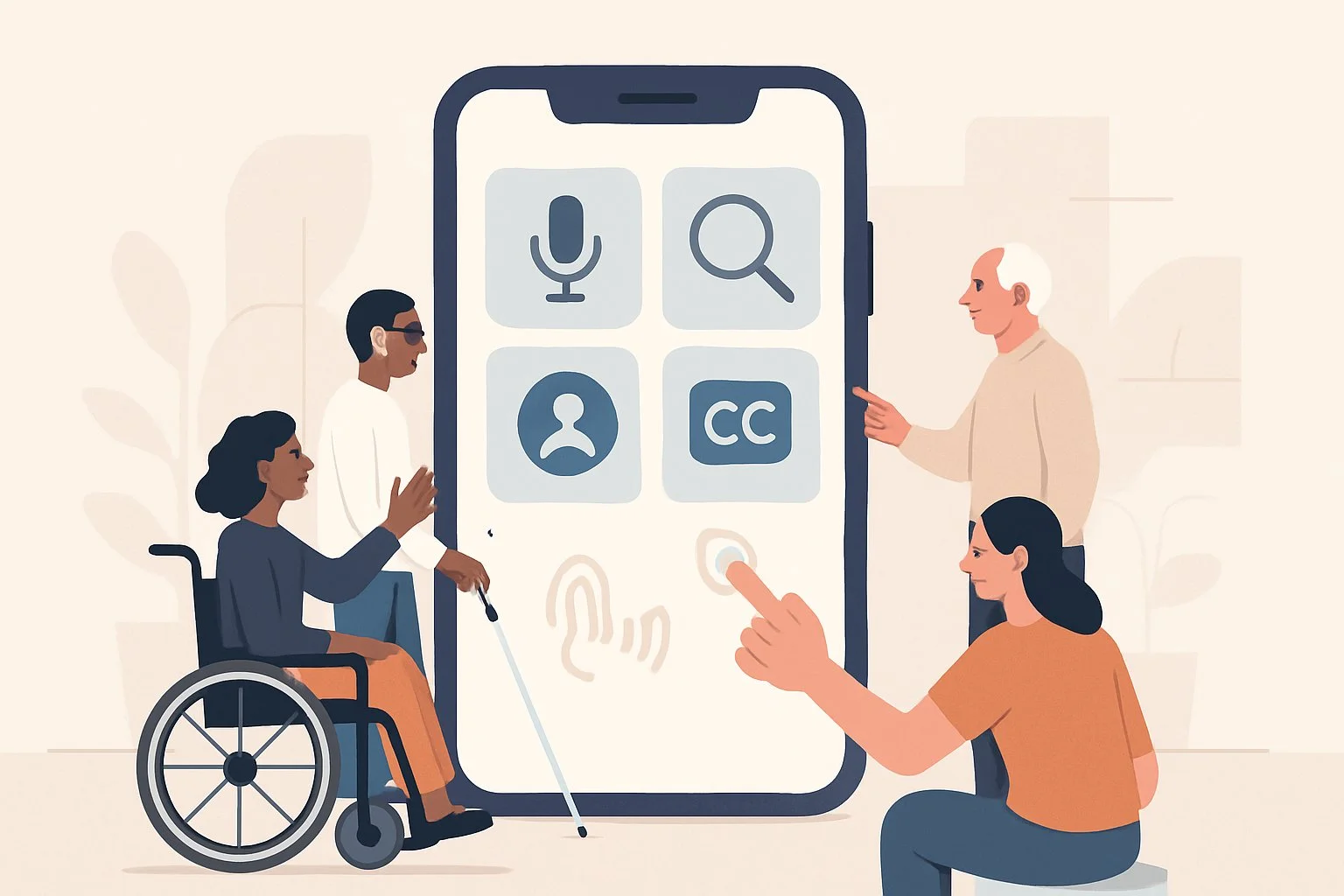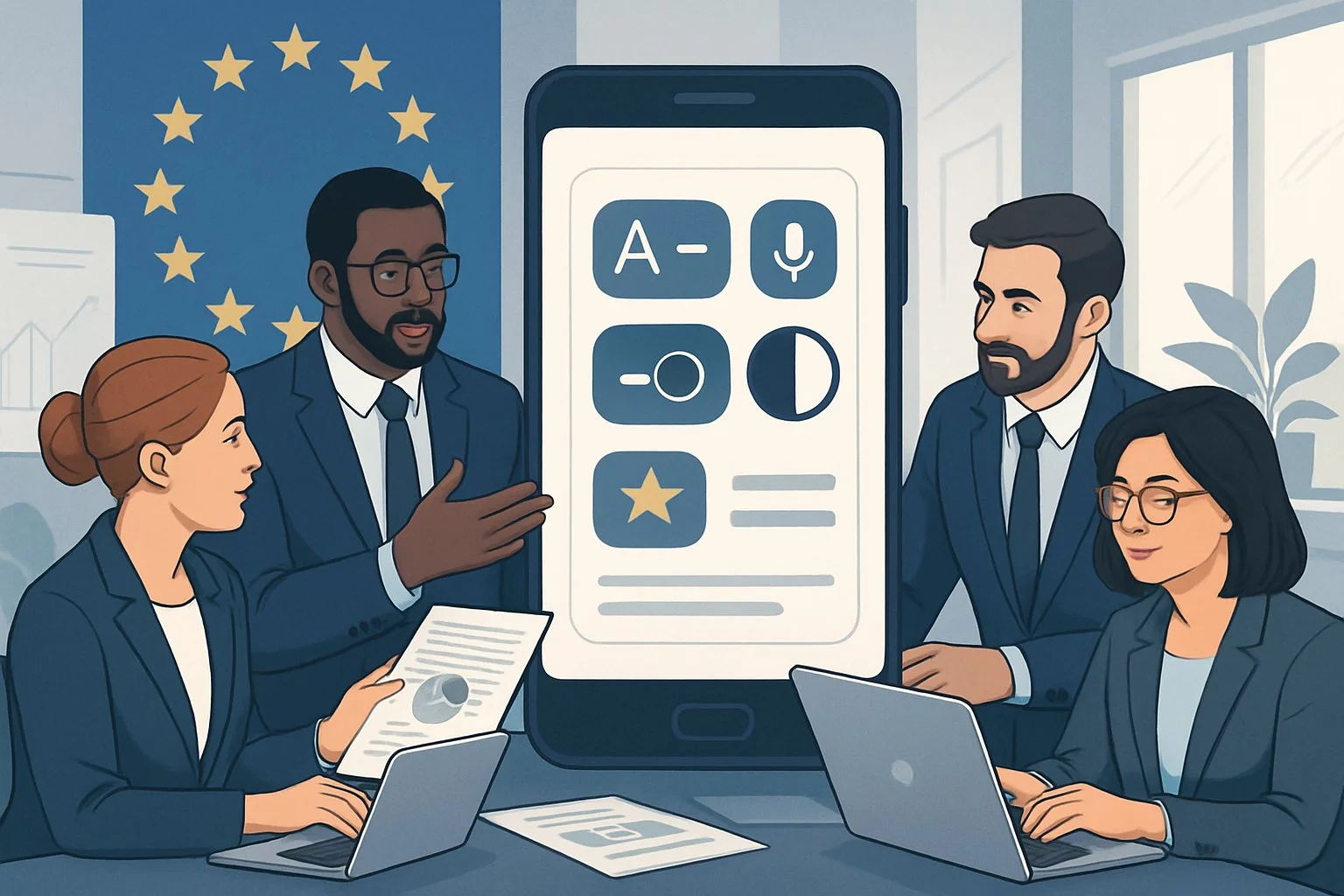
What Is Accessibility In Mobile Apps?
What Is Accessibility In Mobile Apps?
When people can’t use your mobile app because of a disability, you’re not just excluding users, you’re exposing your business to legal risk and cutting yourself off from a significant share of the market. Mobile accessibility means designing apps that work for everyone, including people with limited vision, hearing, mobility, or cognitive function.
Roughly 1 in 5 people live with a disability. Making your app accessible isn’t a favour, it’s a fundamental part of building a responsible, compliant product. Minor changes like improving contrast, fixing button sizes, or adding screen reader support can make the difference between usable and unusable.
This article covers the legal standards that matter, especially for businesses serving EU consumers, and gives you practical steps to check whether your app meets them. Whether you’re aiming for EN 301 549 compliance or simply reducing risk, accessibility should be part of every mobile release.
What Is Accessibility In Mobile Apps?

Mobile app accessibility means designing apps that work for everyone, regardless of ability. It involves building apps(opens in new tab) that account for users with visual, hearing, motor, or cognitive impairments.
This includes supporting assistive technologies like screen readers, VoiceOver, and TalkBack, and ensuring people can use your app without needing perfect vision, fine motor skills, or fast cognitive processing.
Accessibility is based on four principles:
- Perceivable: Users can recognise and access content
- Operable: Interfaces work for all interaction methods
- Understandable: Content and navigation are clear
- Robust: Apps function across assistive tech and platforms
Essential features include alt text for images, closed captions for video, and keyboard or voice alternatives to touch. Transcripts support users who cannot access audio content.
Accessibility testing checks how well your app works with these tools and setups. We test features like voice control, verify that image descriptions are accurate, and check whether navigation holds up without a touchscreen.
Accessible mobile apps are not about ticking boxes. They are about removing barriers. Compliance matters, but usability does too.
Accessibility Compliance For EU-Focused Enterprises

The European Accessibility Act (EAA) came into force on 28 June 2025(opens in new tab). It changes how mobile app accessibility is enforced across the EU. If your business serves EU customers, you fall within its scope, regardless of where you are based.
Key Requirements:
- New apps covered by the EAA must meet accessibility requirements immediately
- Existing apps must comply by 28 June 2030, unless significantly updated before then
- Compliance is based on EN 301 549, the official European standard that incorporates WCAG 2.1 and is expected to align with WCAG 2.2
EN 301 549 sets out specific requirements for digital products and services, including mobile software. It builds on WCAG principles—perceivable, operable, understandable, robust, but it adds mobile-specific criteria that must not be overlooked.
Mobile services in scope include:
- Banking, credit, and insurance services
- E-commerce and online marketplaces
- Ticketing and transport booking services
- Consumer software that provides or supports EAA-covered services
Micro-enterprises with fewer than 10 staff and under €2 million annual turnover are exempt(opens in new tab). Most established companies are not.
Non-compliance carries consequences. These range from administrative penalties to enforced corrective action or removal from EU markets. To reduce risk, you need regular audits against EN 301 549, not just WCAG. The standard goes further and applies directly to mobile environments.
The EAA has made digital accessibility a legal requirement across the EU. It is no longer optional for businesses that want to stay in the market.
Steps You Can Take To Learn If Your App Is Accessible
Accessibility testing needs more than a quick scan. Most tools only check surface-level issues and miss deeper problems with structure, flow, and assistive tech support.
Manual testing gives you the real picture. Install your app on real devices and use it as a user would. You’ll find issues automation alone won’t catch.
Adjust your device settings to simulate different access needs:
- Text size: Increase to 200 percent in settings
- Display zoom: Enable zoom and test navigation
- Contrast: Reduce contrast to check readability
- Colour filters: Simulate common types of colour blindness
Use built-in screen readers like VoiceOver or TalkBack. Navigate without looking at the screen. If you can't complete a task that way, users with visual impairments can’t either.
Test without touch. Use keyboard controls, switch inputs, or voice commands. If your app fails here, it's not operable for many users.
Change orientation. Rotate between portrait and landscape. Every feature should still work as expected.
You should also test with real users who have disabilities. Their feedback shows you where real-world barriers exist—often in places automated tools miss.
AUDITSU combines deep automated analysis with mobile-specific checks that traditional tools overlook. If you're not sure where to start, we help you find the gaps that matter and show you how to fix them.
How AUDITSU Supports Mobile App Accessibility
AUDITSU makes accessibility testing faster, clearer, and purpose-built for mobile. Unlike traditional tools that focus on websites, AUDITSU analyses native app files directly—no complex setup or code changes required.
The platform flags accessibility issues that can exclude users with permanent or temporary disabilities. It helps teams reduce legal risk under the European Accessibility Act and identify failures that affect real users.
Key features include:
- Automated analysis of mobile app builds
- Compliance checks against WCAG and EN 301 549
- Risk scoring to prioritise what matters
- Clear reports with actionable fixes
Most tools weren’t designed for mobile. They need developer input, weeks of auditing, or workarounds to test app content. AUDITSU removes those blockers.
It scans your app and returns a structured audit—fast. You see what failed, why it matters, and how to fix it. No accessibility expertise needed.
For teams preparing for EAA compliance, AUDITSU delivers a complete accessibility snapshot. It highlights critical barriers, maps them to standards, and gives you a path forward.
Whether you're just starting out or already scaling, AUDITSU helps you move faster without cutting corners.